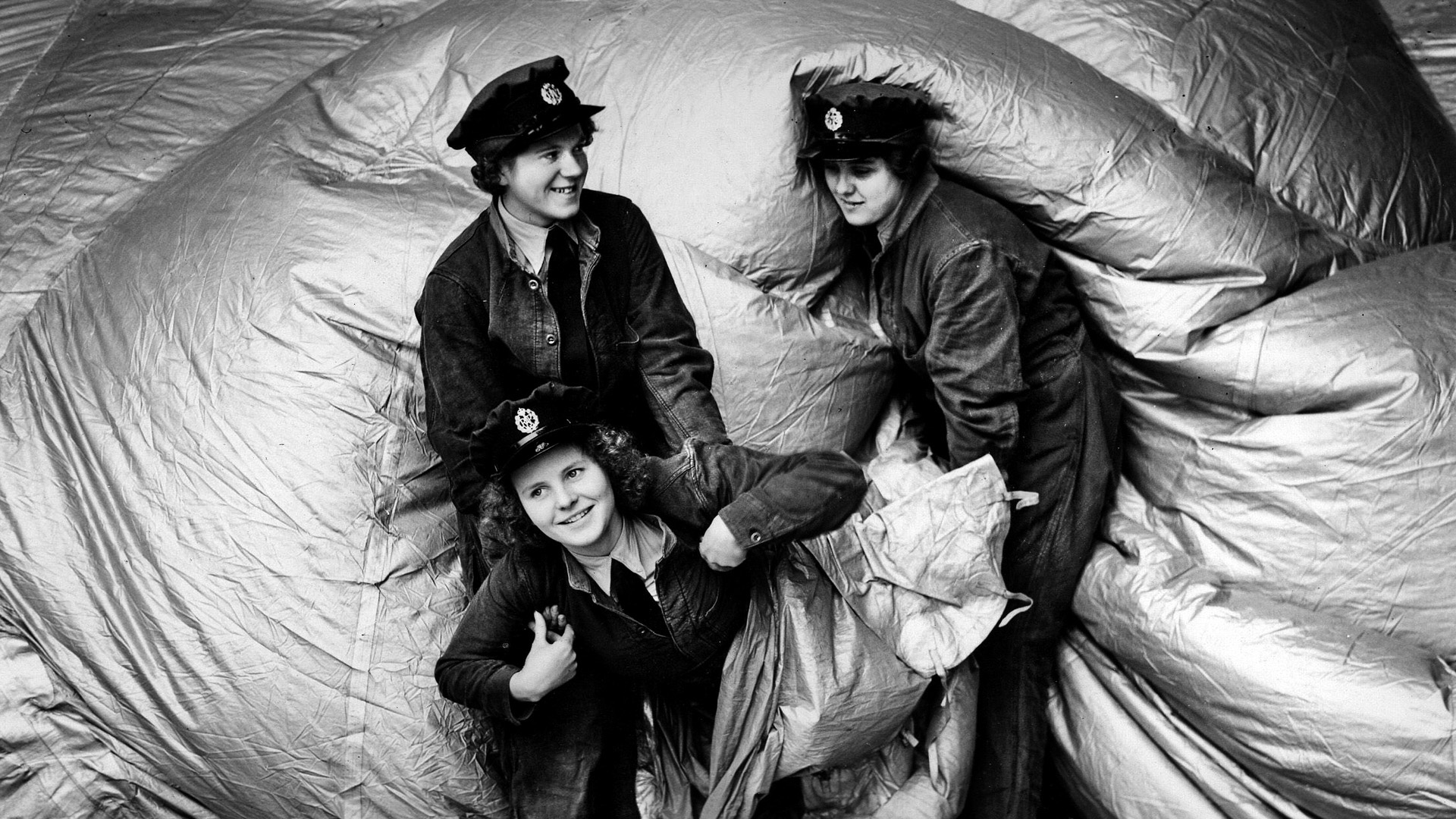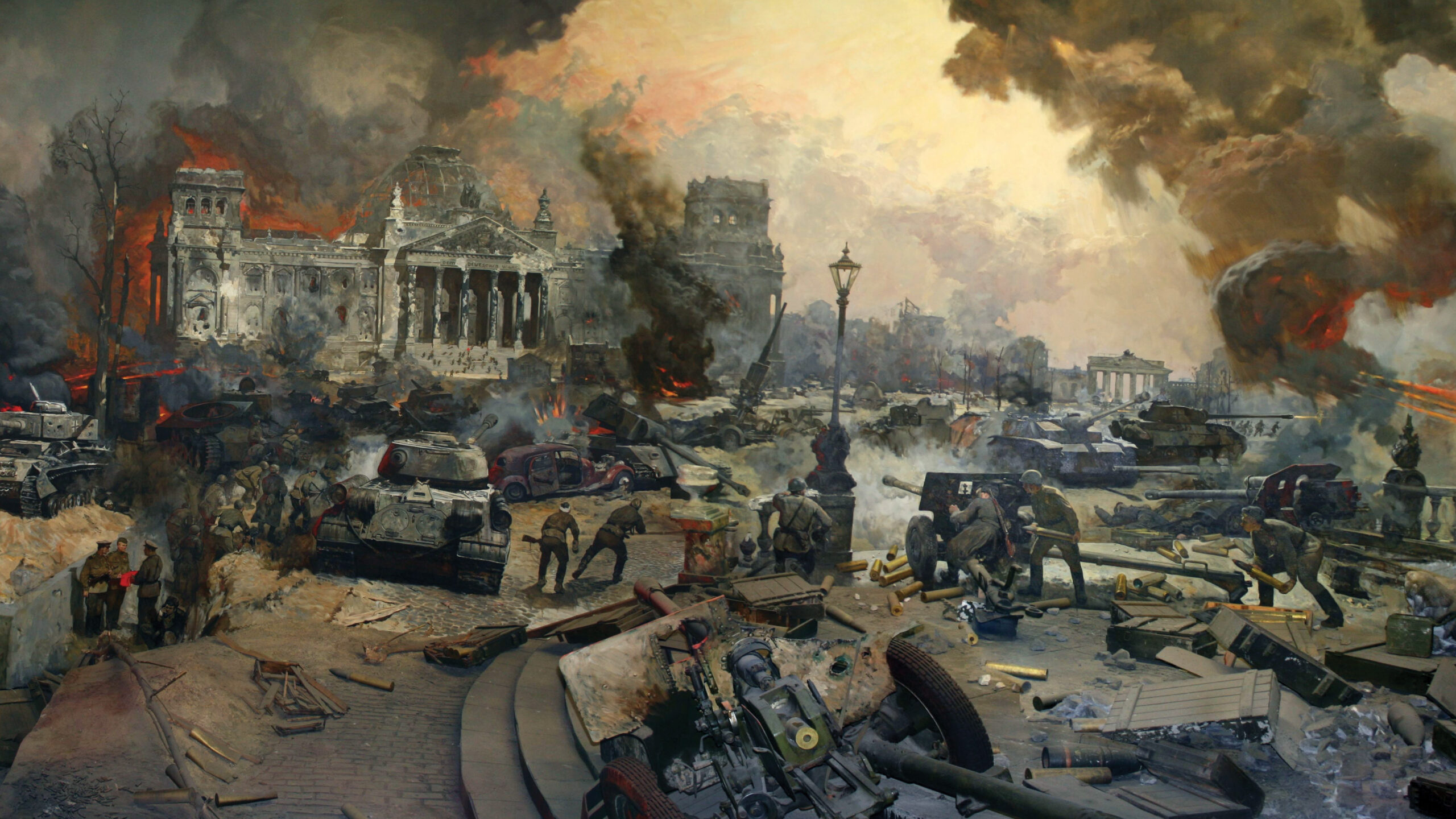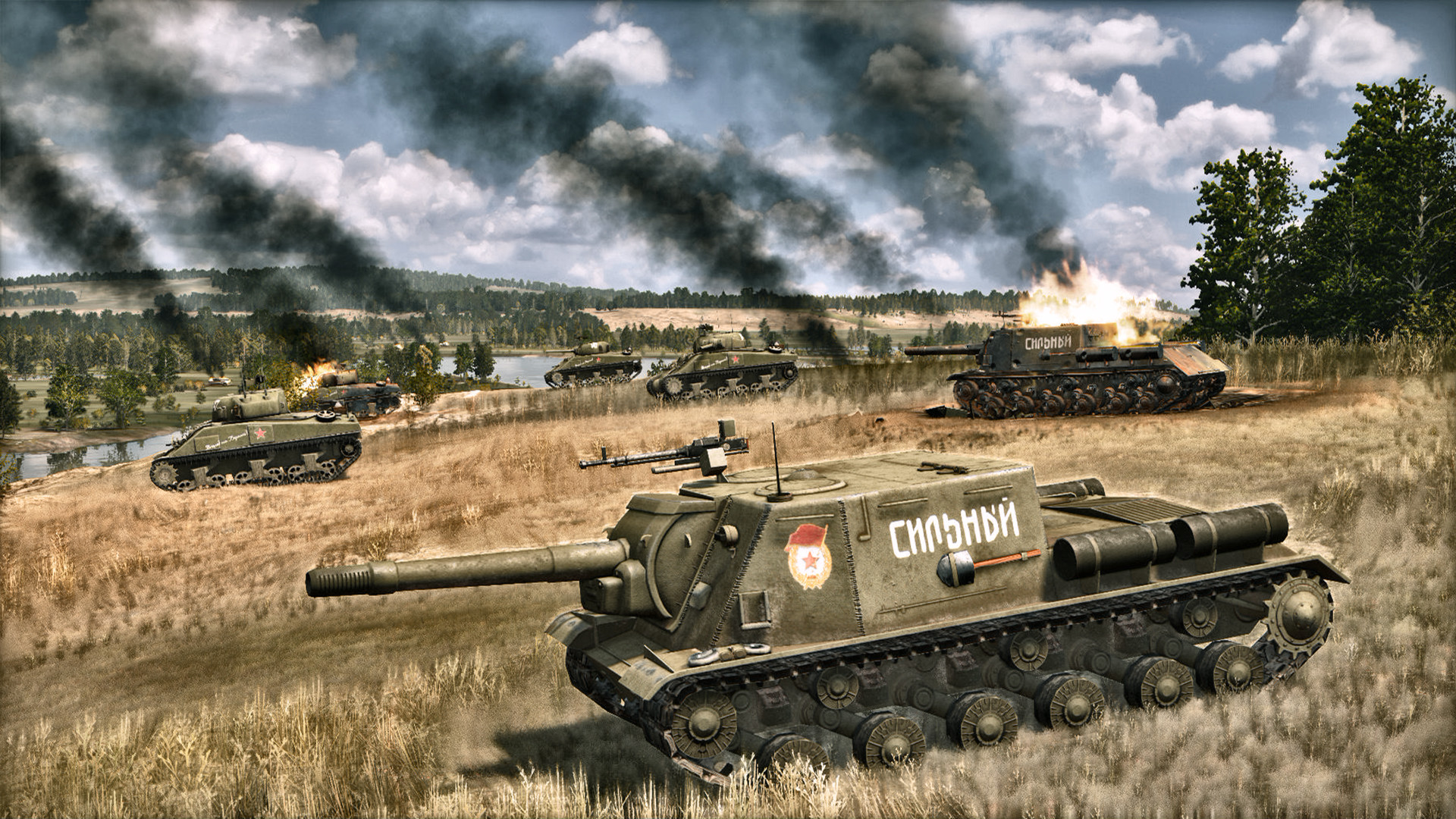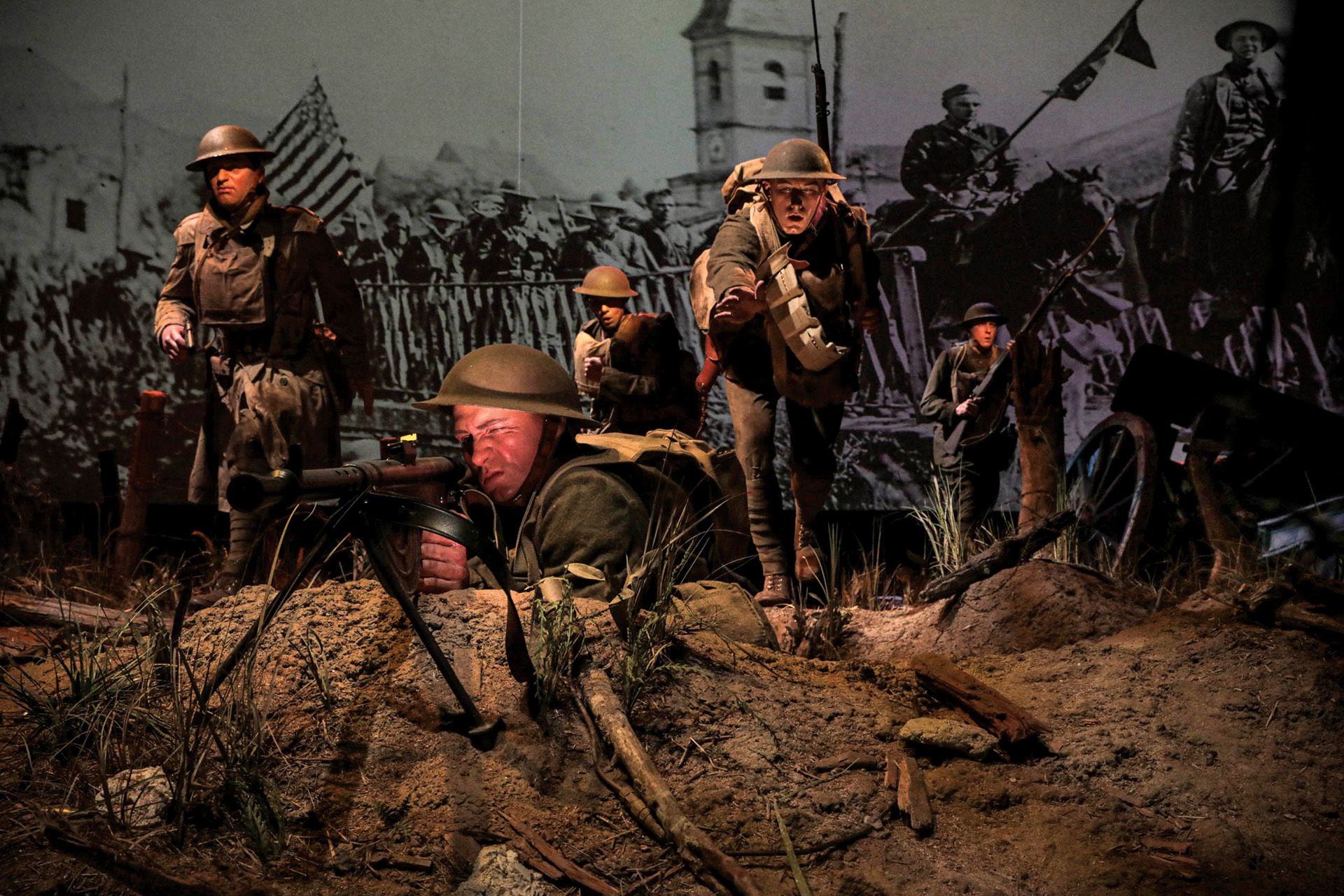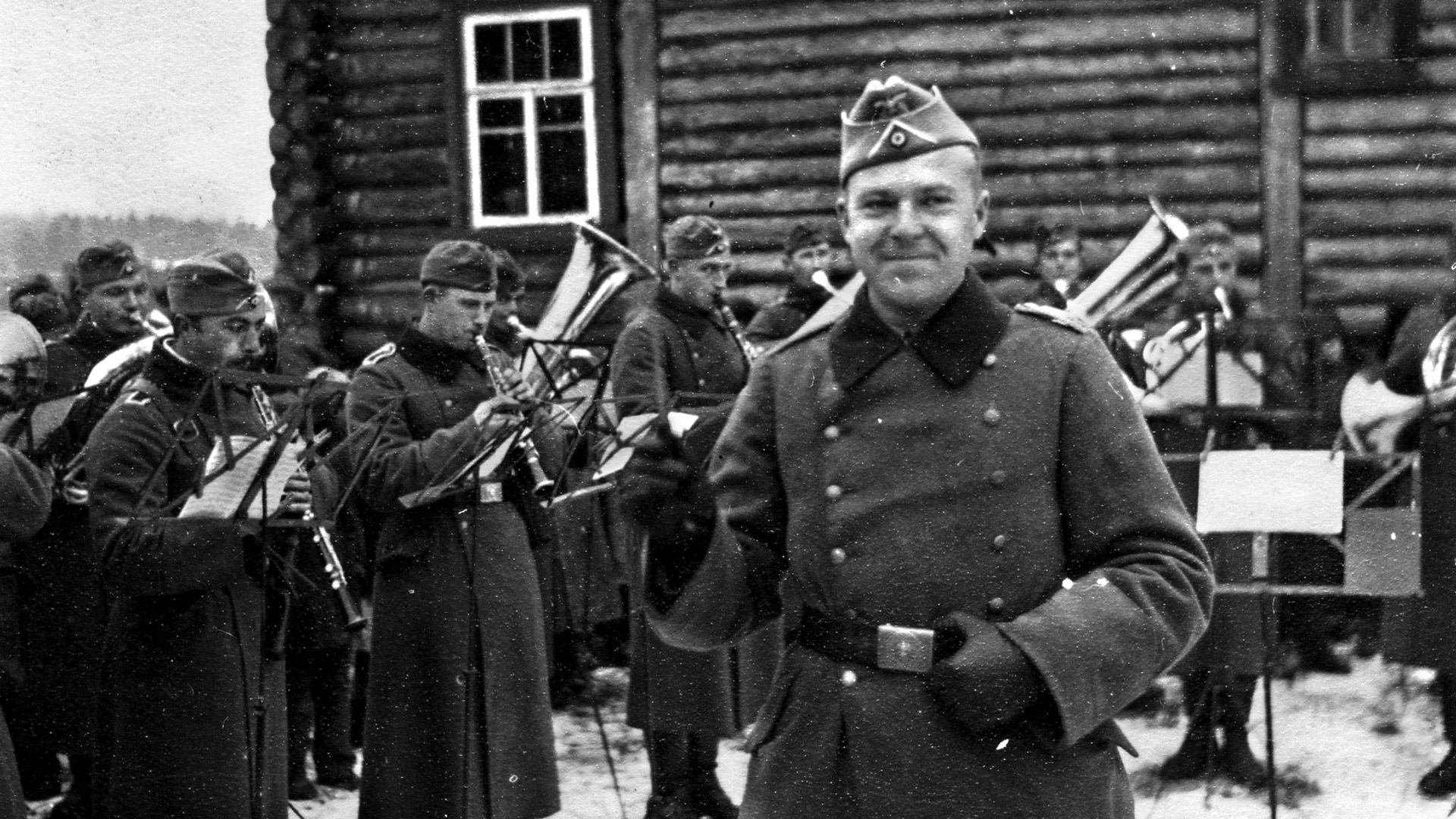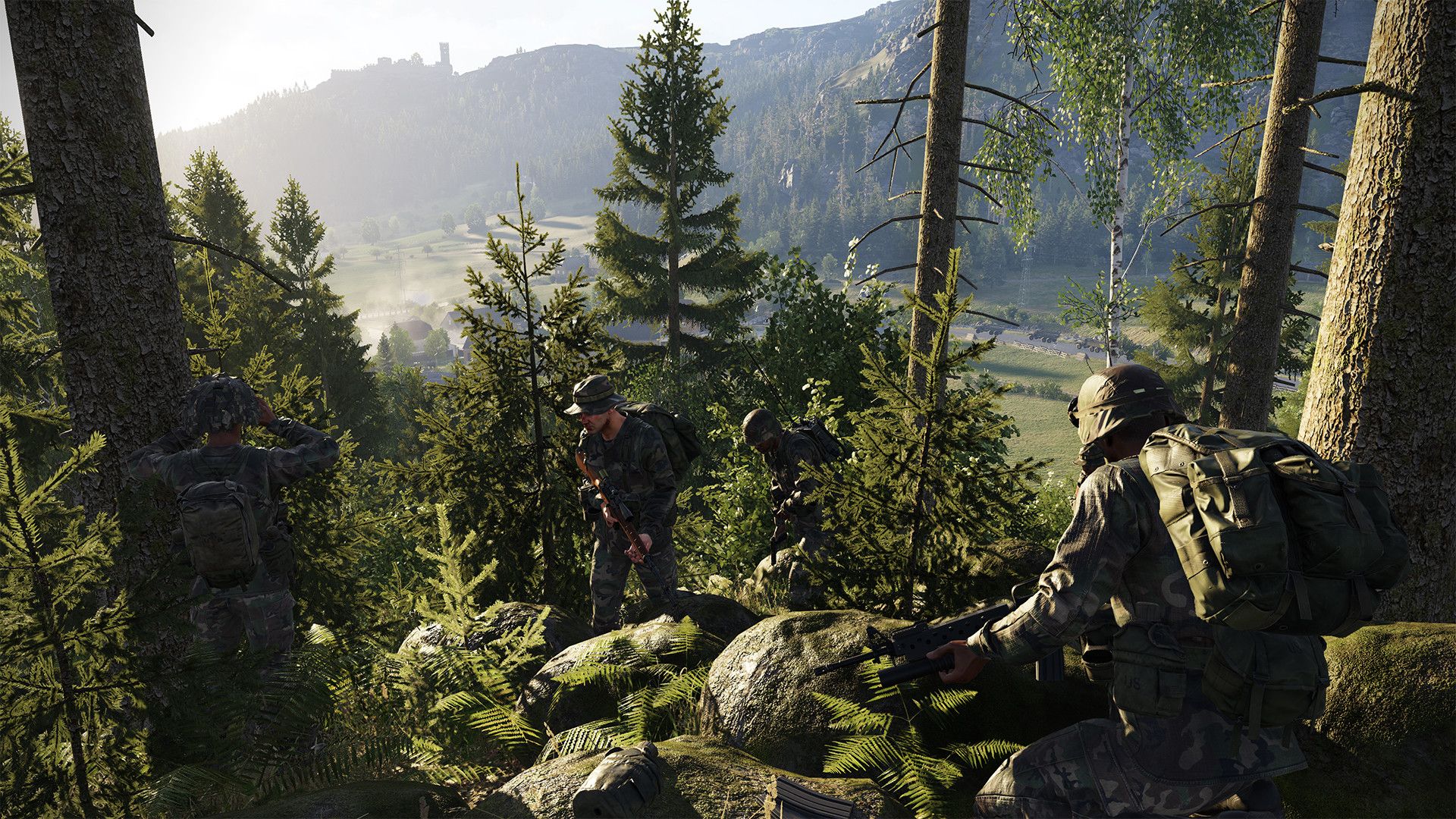By Glenn Barnett
An old English adage states that “It’s an ill wind that blows no one any good.”
Such was the case when a gale pounded England on the night of September 17, 1940. Several barrage balloons, protecting against German bombers, broke loose and were carried by the tempest across the North Sea. When they came to earth in Sweden and occupied Denmark, their trailing metal ropes caused power outages as they fell across electrical lines. The outages interrupted rail service and traffic lights and even disabled a radio antenna.
The incident spawned a new weapon.
Official complaints from Sweden reached the British government and were included in a report to the War Cabinet. Reading of the damage caused by the balloons, Prime Minister Winston Churchill ordered a study to determine whether balloons could be used to cause destruction in Germany.
The Air Ministry distrusted the idea, believing that balloons would interfere with their own plans. The Navy, however, believed the idea held promise. The Admiralty carried out meteorological studies that quickly confirmed that from 16,000 to 25,000 feet, the prevailing winds blew from west to east, preventing the Germans from using balloons to retaliate against Britain. Germany did not have access to latex rubber to make its own balloons in any event. It was also determined that the winds were most reliable in winter, when electricity use in Germany would be at its highest, magnifying the damage.
Two methods of using of these devices were considered. The first use of the balloons would be to trail a thin steel wire. If the balloons could be made to skim the ground, there was a good chance they would pass over electric power lines. The steel wire—actually piano wire—could then short out the power in the vicinity, damaging Germany’s power system and diverting manpower to guard it and repair the damage.
The second type of balloon payload would be incendiary bombs, which could ignite fires in the farmlands and forested regions of Germany. This, again, could divert German manpower to monitor these potential fires.
The weather balloons, when inflated, were eight feet in diameter (compared to the 30-foot diameter of the more famous Japanese fire balloons). Crude but effective mechanisms were used to keep the balloons above 16,000 and below 25,000 feet until the time they were calculated to reach Germany, based on the current speed of the wind. They were then made to descend by releasing hydrogen until they dropped their incendiary payload or, in case of the wire-carrying balloons, skimmed across the ground. There, a mineral-oil drip would lighten the load and maintain a neutral buoyancy, keeping the balloon in the air so that it could reach and short circuit power lines.
The wire balloons released a 700-foot length of lightweight, 1/16th inch hemp rope that in turn was tied to a 300-foot length of piano wire. Ideally, the wire would drag across the ground until it encountered power lines.
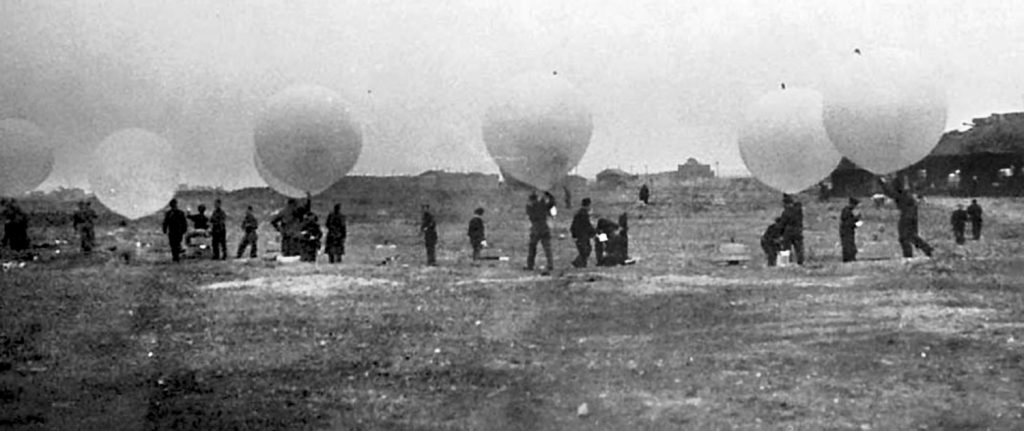
The fire-bomb balloons would carry small incendiary devices that could burn in rural areas. There were three types of these bombs, called beer, jelly, and socks. The “beer” bomb consisted of a cylindrical canister filled with eight half-pint glass bottles of white phosphorus, benzene, water, and a strip of rubber that formed a stopper. A slow-burning fuse, lit just before releasing the balloon, would tip the canister over, allowing the bottles to fall out when the balloon reached German skies. When the glass shattered, the phosphorus would ignite on contact with the air and burn whatever it touched.
“Jelly” bombs consisted of four and a half liters of incendiary jelly in a petrol can. A slow fuse would ignite the jelly, and a fireball would burn everything within a 20-foot diameter.
“Socks” were tubular canvas bags of incendiary material resembling sausages, each weighing six pounds and soaked in paraffin. Three of these were attached to a balloon. Upon release, each sock would take on a “V” shape that, it was hoped, would snag on a tree. Fuses at either end of each sock would cause it to burn white-hot for up to 15 minutes. As it happened, the Royal Navy had about 10,000 of these socks left over from a cancelled program.
Having studied the possibilities, the British Chiefs of Staff approved Operation Outward, as it was officially known, in September 1941. The first balloon launches took place on March 20, 1942. The site for assembling the first balloon weapons was the naval facility at HMS Beehive, an on-shore facility near Felixstowe in Suffolk. The actual launches took place at the local Golf Club.
A crew of 230 men and women from the Royal Navy, Royal Marines, the Women’s Royal Naval Service (WRENS), the RAF Balloon Command (which grudgingly provided the hydrogen) and the Naval Meteorological Services were gathered for the purpose of preparing and launching the balloons. The WRENS were already active in RAF Balloon Command, assisting with the daily activities of the barrage balloons. Now 140 of them were assigned to the top-secret Operation Outward. They were housed in a vacated convalescent hospital, packed 16 women to a room utilizing bunk beds.
Tanks of hydrogen arrived at the golf course, where a crew of WRENS would fill the balloons with gas while getting covered by the annoying French chalk. They worked behind a triangular wind break made of canvas and wood.
To keep the balloons from rubbing against the canvas and creating static electricity—which could ignite the gas—the expanding balloons were sprayed with water while being inflated with hydrogen. Still, despite wearing protective gear such as a flash-proof jacket, a metal mesh hood, protective hand cream, and special gloves, several of the young women were burned when the hydrogen-filled balloons accidently burst. Others received “instant suntans.” As a part of their training, the WRENS learned to fire the Lewis machine guns that surrounded the golf course for use as antiaircraft protection. Occasionally, a balloon would be released for their target practice.
The WRENS also liked to write rude messages on the balloons before they were inflated—“Balls to Hitler” or “Take this you bastards.” Once inflated, the size of the messages became prominent. They also adopted as their theme songs popular tunes of the day, such as “I Don’t Want to Set the World on Fire” by the Ink Spots.
Once filled with hydrogen gas, the balloons were transported to another part of the golf course, where they were mated with their payloads and released into the blustery sky toward the enemy. When released, the balloons and their cargoes rose quickly and grew in size until a built-in cord tightened to constrict the expansion of the balloons to keep them below 25,000 feet. At that altitude, the tightening of the cord would release some gas. The balloon would then start to descend. The slow-burning fuse would release the stopper in a container of mineral oil. The oil would slowly drip out so that the payload would lighten and slow the descent. The fuse would also release the fire bomb or wire.
When the balloons were first released, local civilians mistook them for German parachutes as if they were being invaded. It took a while to assure civilians that there was nothing to worry about while keeping the program secret.
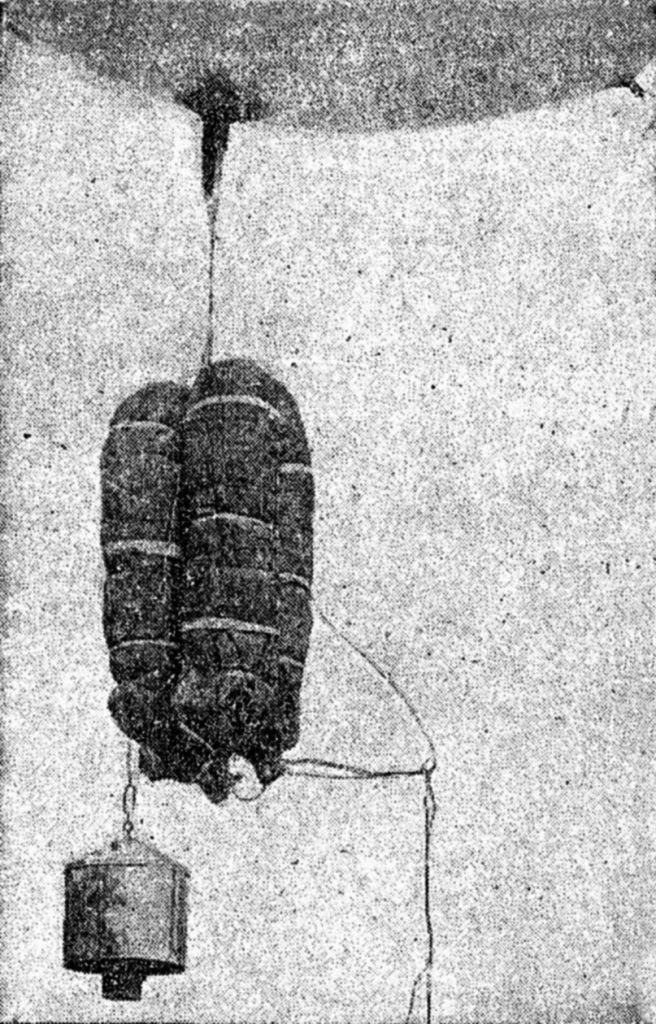
The intelligence service listened closely to German radio traffic to learn the effect of these jerry-rigged devices. Underground sources in the occupied countries also reported what they witnessed. It wasn’t long before the British learned of forest fires near Berlin and as far away as East Prussia and Hungary, as well as reported electrical outages. They also learned that the Luftwaffe had assigned as many as 250 fighter planes (in one case) to shoot the balloons out of the sky.
This was good news. It meant that the enemy was forced to dedicate precious fuel, aircraft, and pilots. These resources were diverted from offensive operations, and it cost the Germans far more to defend against the balloons than it cost the British to launch them.
In July, a second site was set up at a golf club near Dover, the closest approach to the continent. A third launch site was established at Waxham in Norwich. As the three crews became more efficient, up to 1,800 incendiary and wire-bearing balloons could be released in a day. All the while, the launches had to be coordinated with the RAF to be sure they were not in the air when a major bombing strike on the continent was taking place. By May 1944, the scope of operations was scaled back because of the increased Allied bombing over the continent. It was feared that the thousands of bombers and fighters might be endangered by the floating bombs. With D-Day near, balloon operations were curtailed drastically, and only a few launches occurred each day. By mid-summer, all supplies of hydrogen gas were preempted by the RAF for use in barrage balloons around Normandy and elsewhere. Operation Outward used up the last of its hydrogen supplies in early September.
Altogether, during the life of Operation Outward 99,142 balloons were launched. About 10,000 more fire balloons went up than wire balloons, but both did their jobs. Perhaps Outward’s greatest achievement occurred on July 12, 1942, when a wire balloon floated over a 110,000-volt power line near Leipzig. The trailing wire shorted a circuit breaker at the Böhlen power station, which ignited a fire and explosion that destroyed the power station and left a wide area without power.
There were a few accidents with the wind-driven bombs. One balloon got caught in an eddy and turned back over England, where its steel wire knocked out power for the town of Ipswich. Worse, on the night of September 19, 1944, one of the balloons, drifting over Sweden, caused two trains to crash. It was all the more tragic as September 4 was the last day the balloons were released.
Postwar analysis concluded that from the beginning of the operation until January 1943 (German records are spotty after that), there were 520 major disruptions to German high-voltage lines and more still in occupied territory.
Operation Outward was born in the desperation of the Blitz, when Britain stood alone. It was an inventive if crude way to strike back, and it worked. Far more damage would be caused by RAF and U.S. bombing, but at a time when Britain needed to subvert Nazi air superiority over the continent, the unpredictable balloons were just the thing.
Author Glenn Barnett is a retired college instructor and aerospace engineer. He worked on the Apache helicopter, B-1B bomber, and Space Shuttle. He is a frequent contributor to WWII History.
